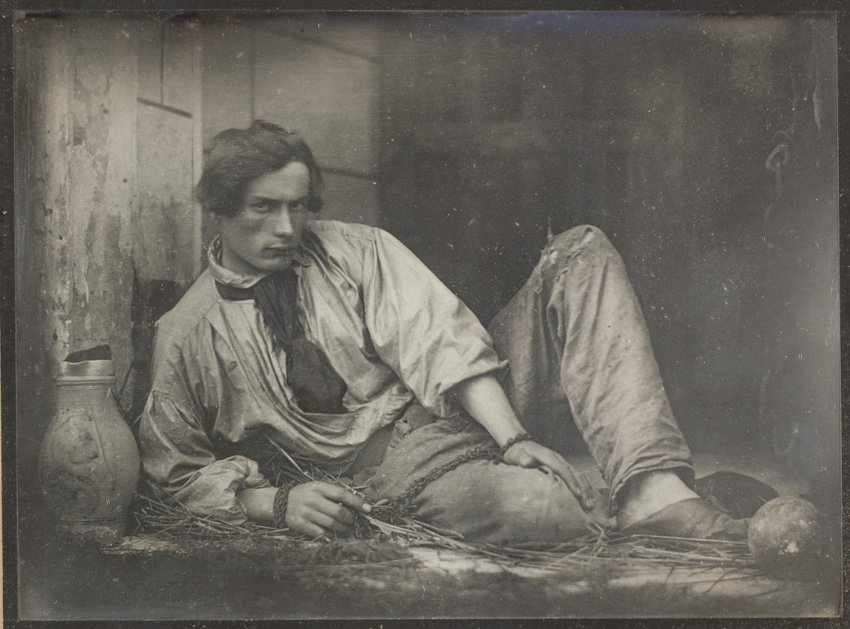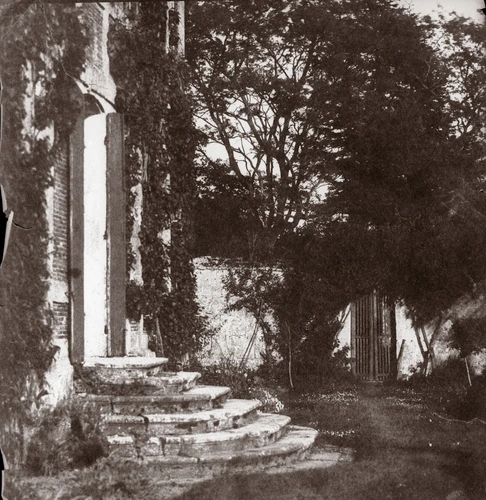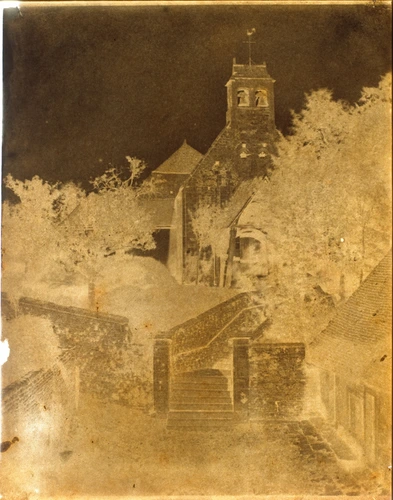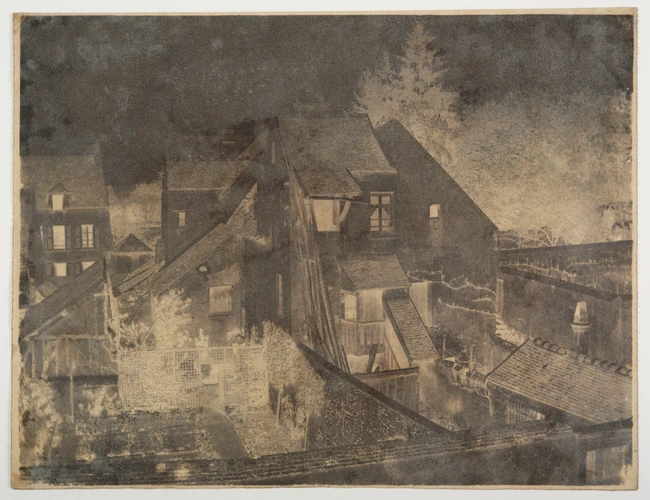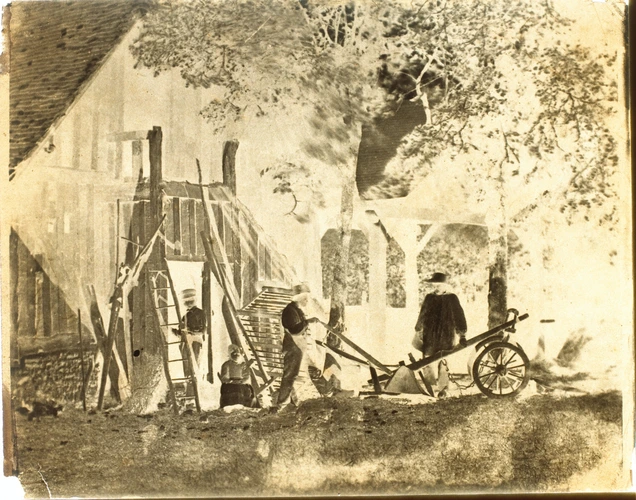Louis Dodier en prisonnier
From a rich Parisian family, Baron Louis Adolphe Humbert de Molard was one of those wealthy amateurs who brought their talent and passion to early photography. He took up photography in 1843 using, as here, the daguerreotype. Later, in the mid 1850s, he became one of the first French photographers to use the calotype, a technique on paper developed in England by Fox Talbot, and introducing the principle of positive and negative.
His images were sometimes taken spontaneously, but more often they were composed like genuine genre scenes. This choice can be explained in part by the long exposure time, but equally by the heritage of the pictorial tradition.
Many of his compositions evoke peasant life, where the characters are busy shelling peas or cutting up a pig. His friends, members of his family and servants were his models. He got his steward, Louis Dodier, to pose for him on several occasions in portraits which reveal the intimacy that existed between the two men. Here the scene is not very explicit. We are a long way from daily life, and to find the inspiration for the composition we should look to both painting and literature, specifically in Byron's work and the novels of Walter Scott. The monumentality of the composition, achieved through subtle lighting and a low camera angle, highlights the sombre beauty of the steward.
Three different versions of this scene are known today. By producing several images of the same subject, Humbert de Molard shows his interest in aesthetic experimentation, like a number of the early amateur photographers who did not have to consider the commercial aspect of their work.
